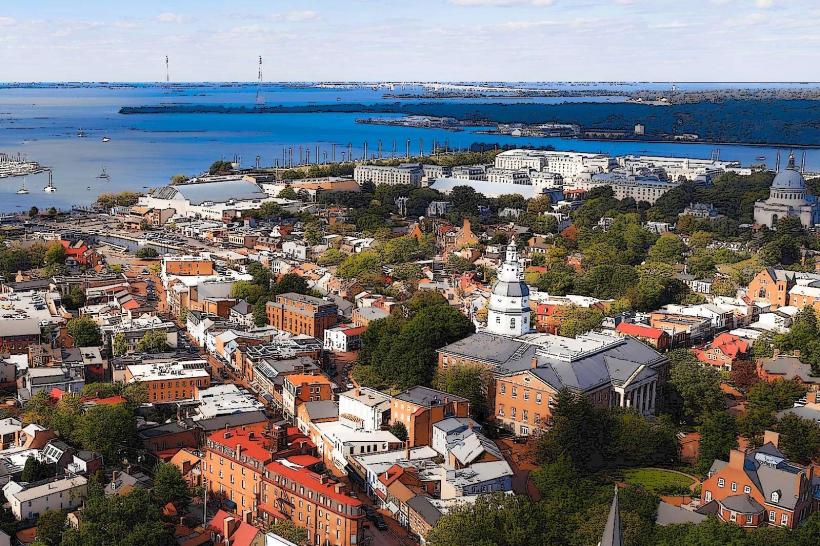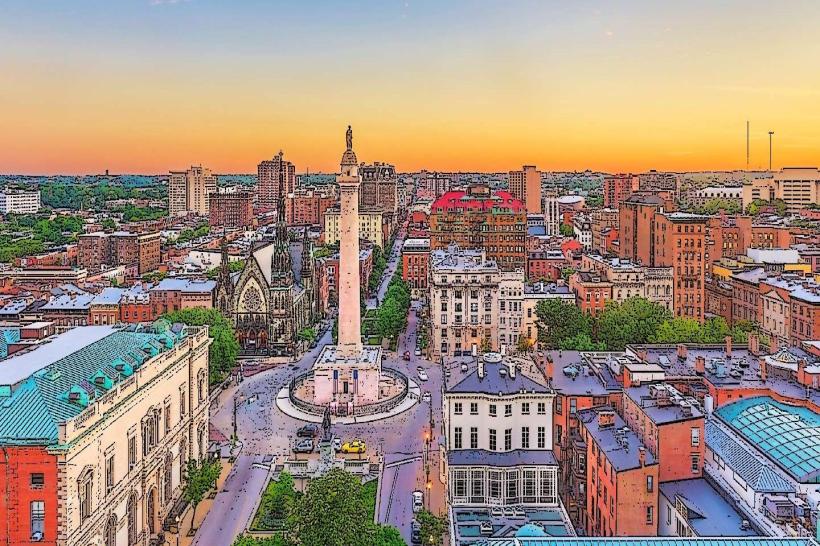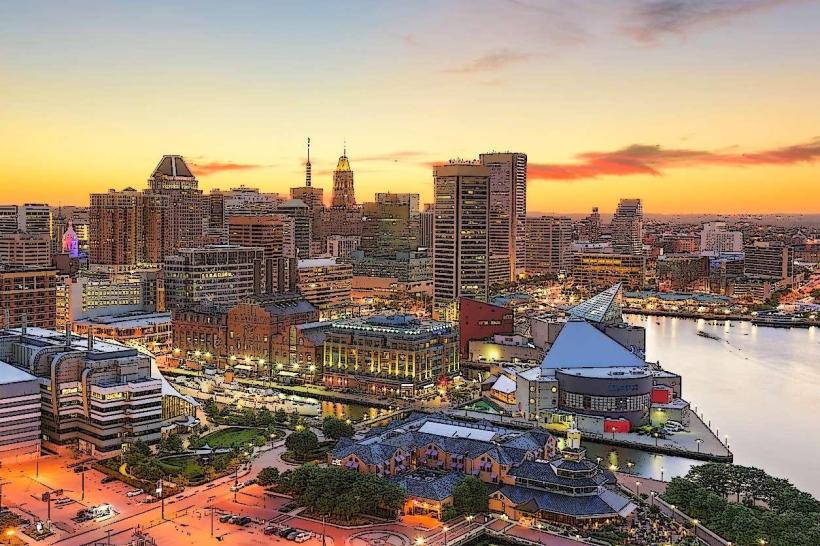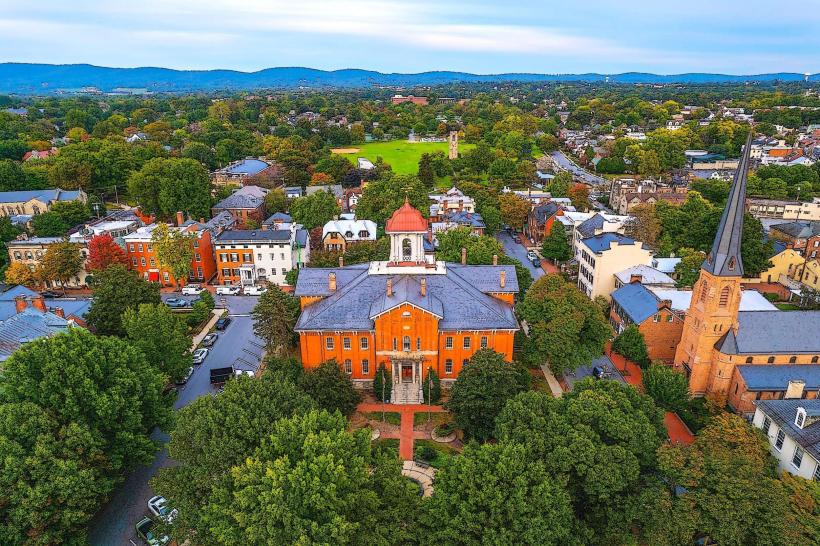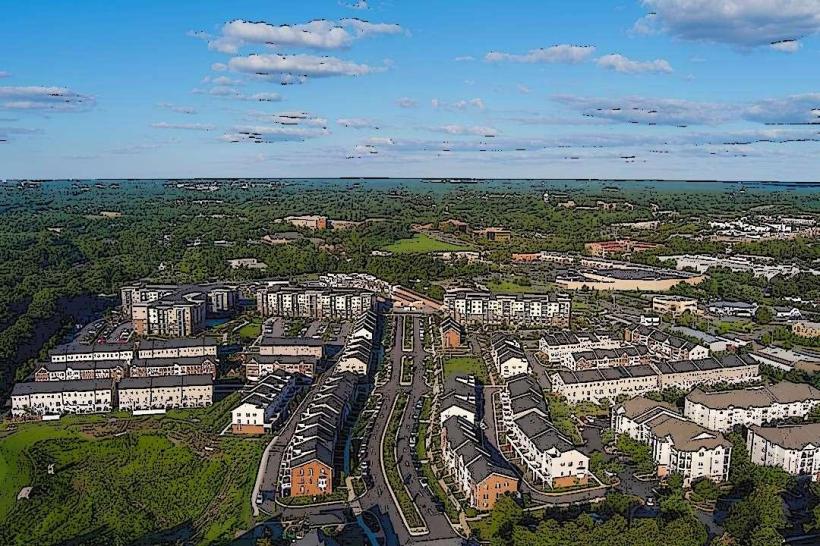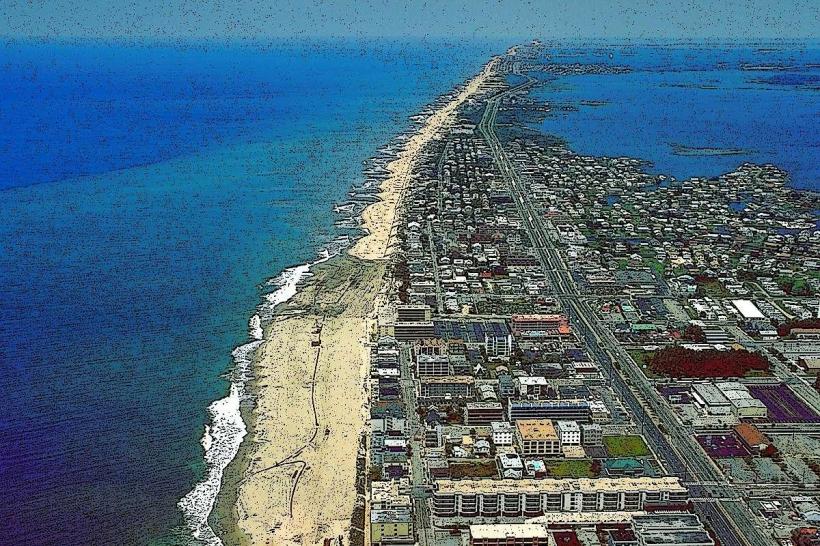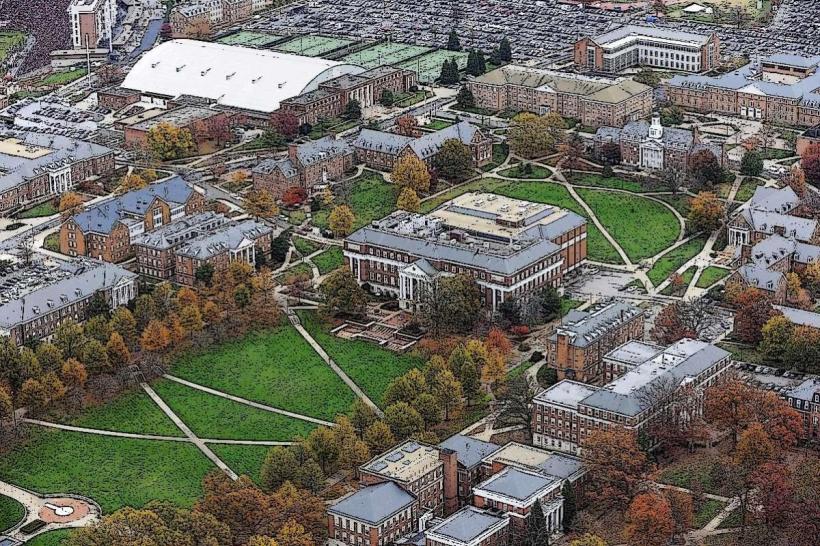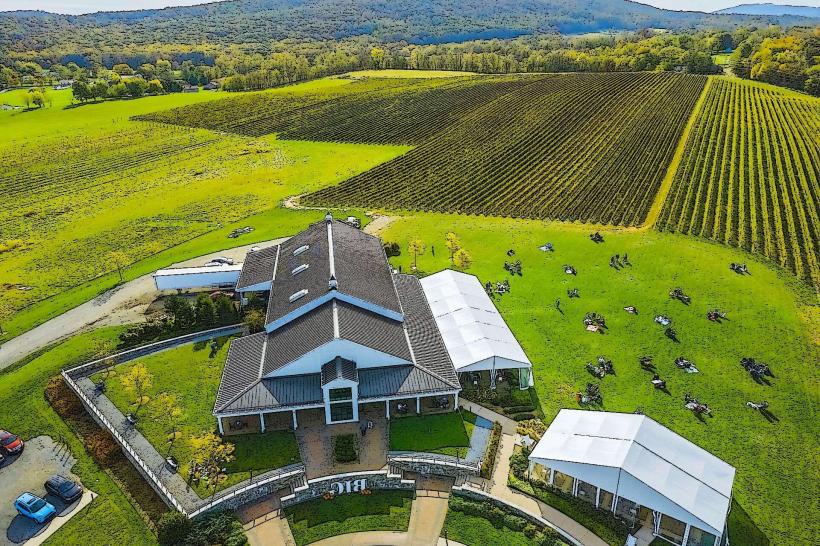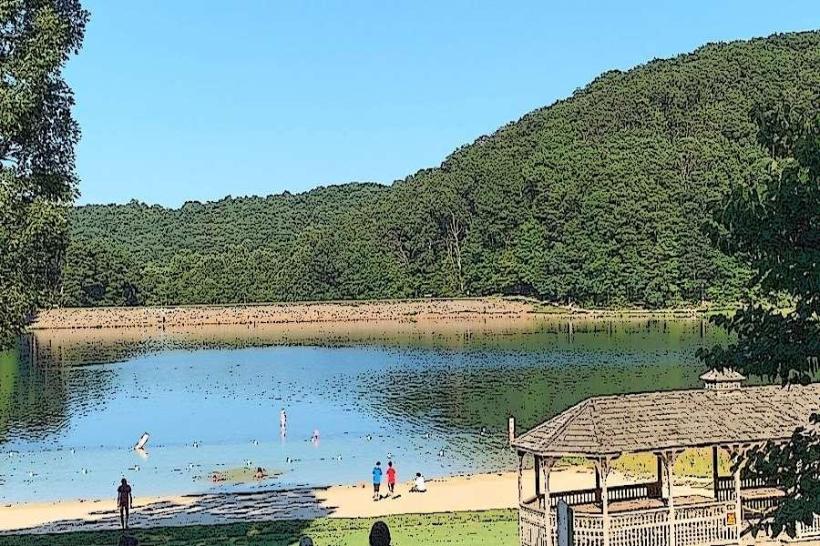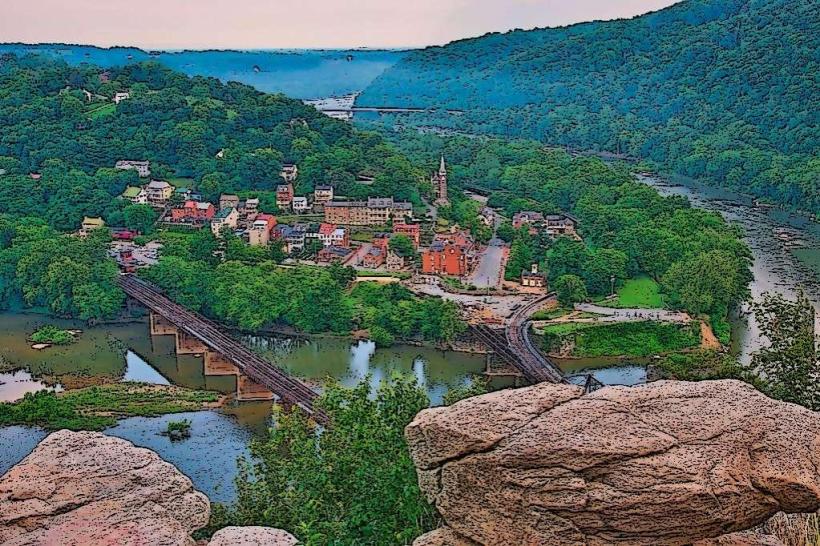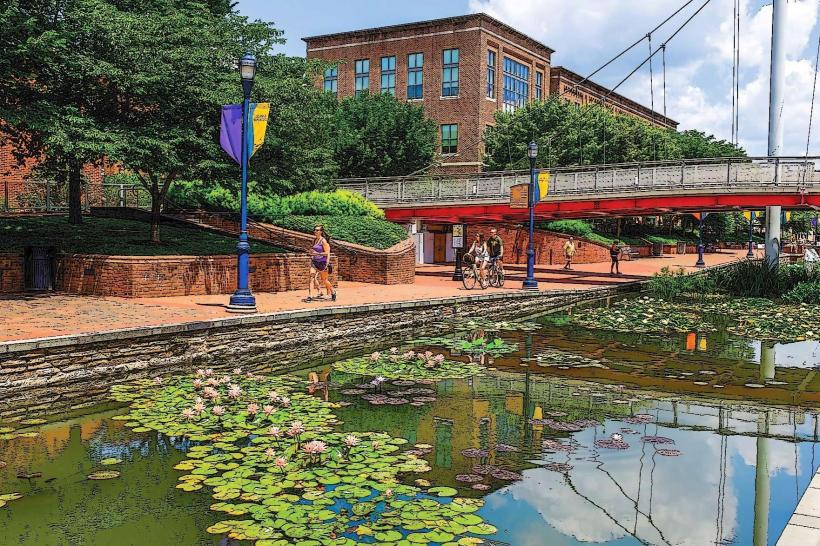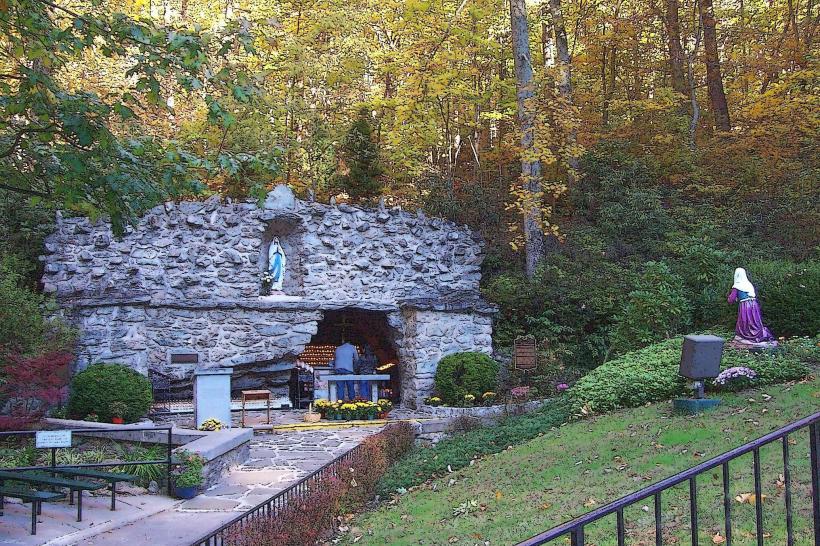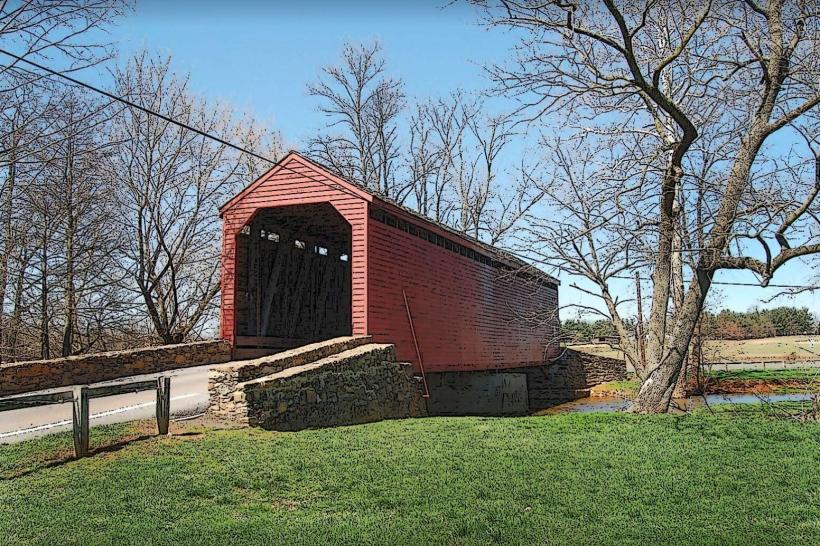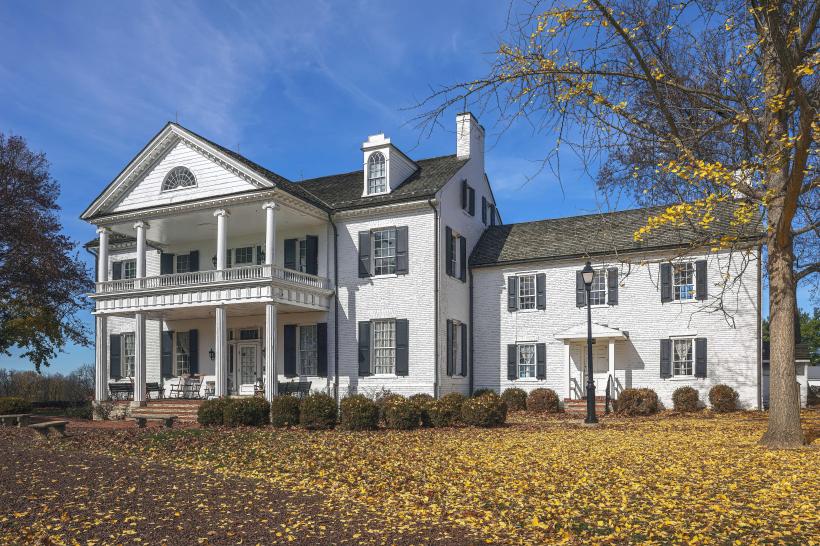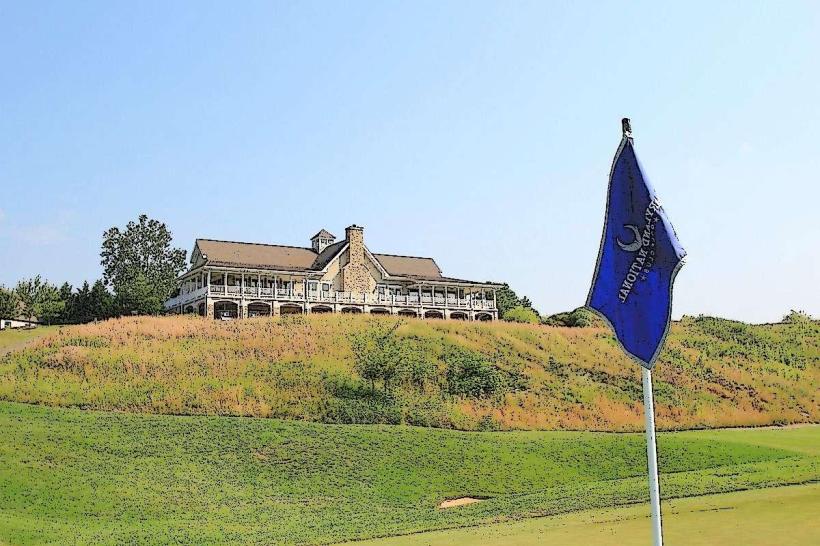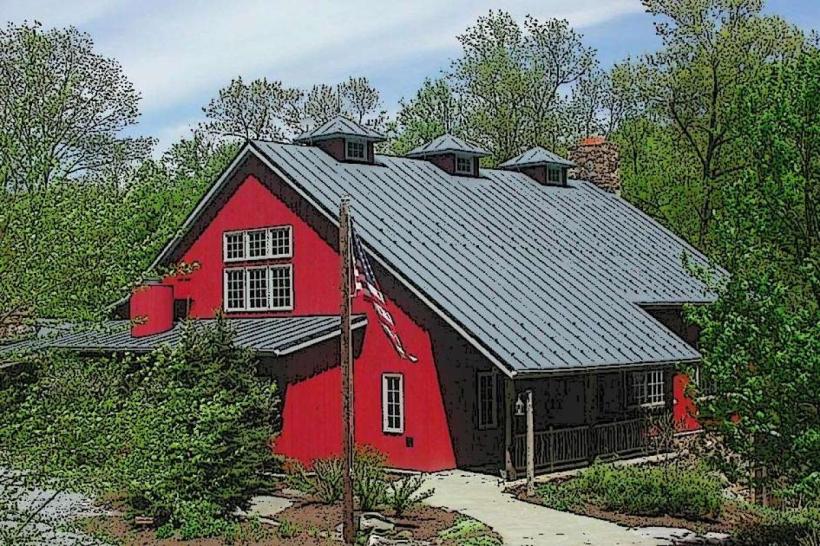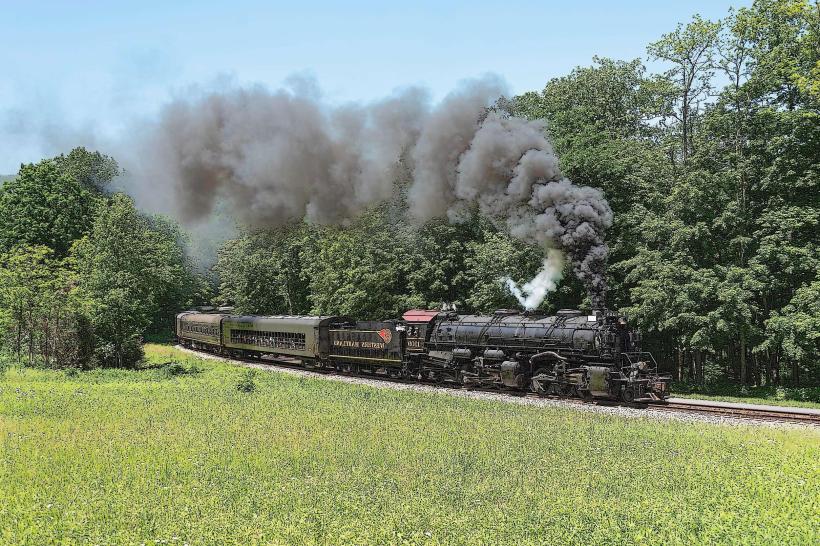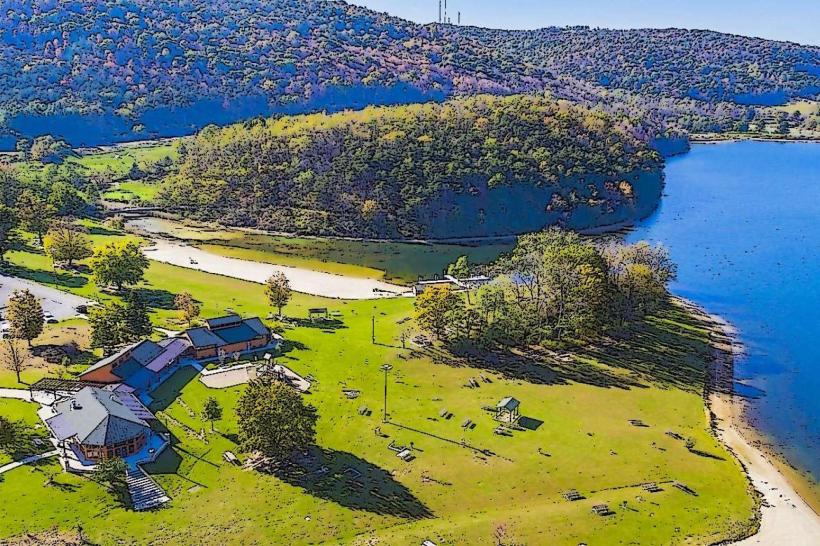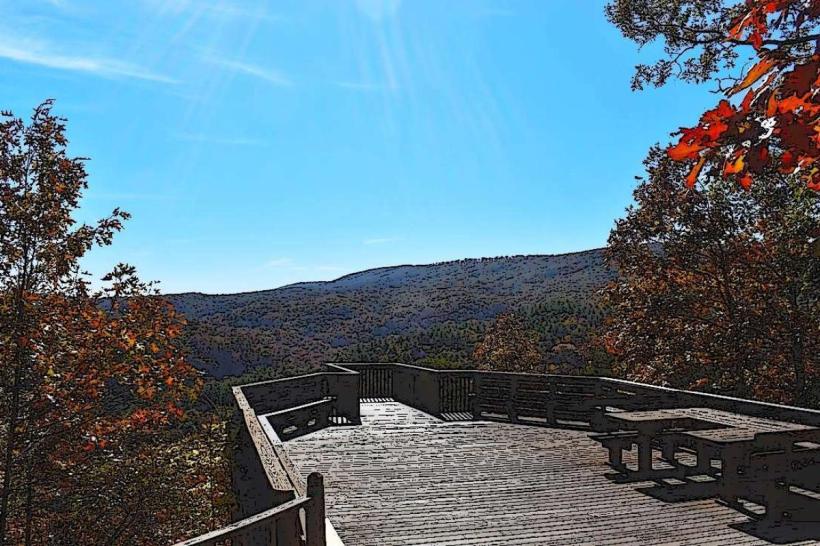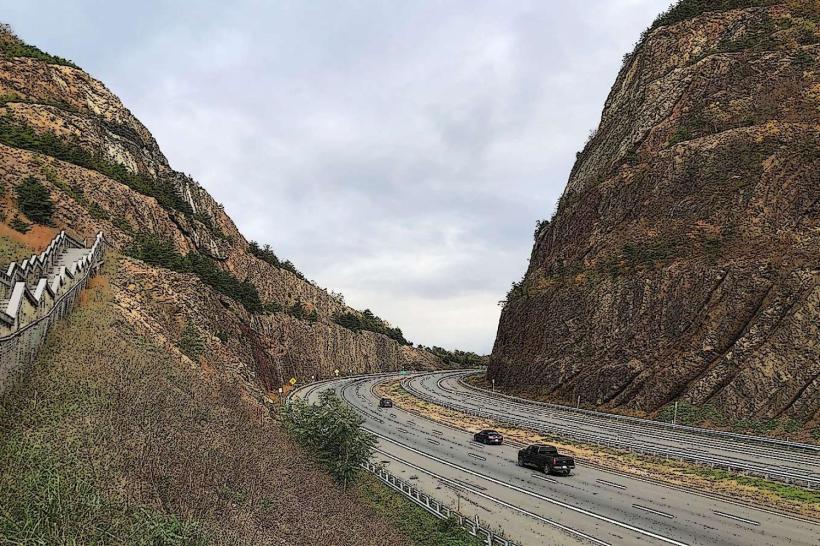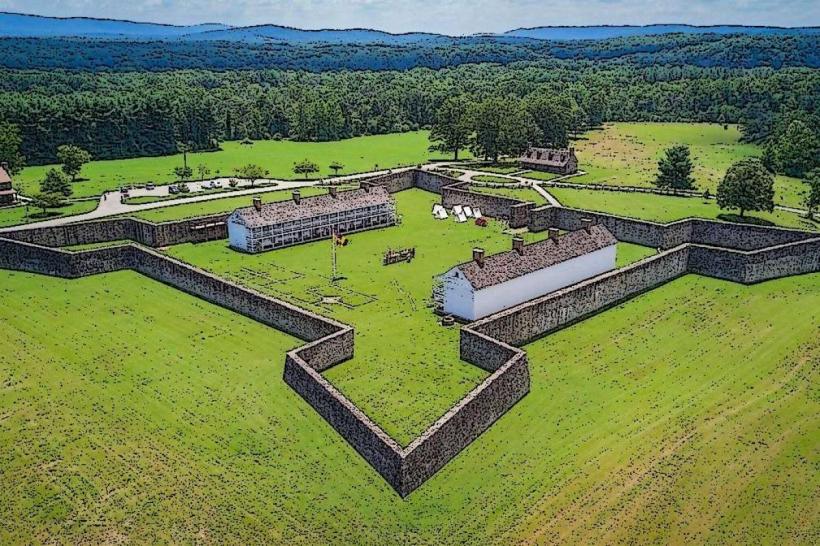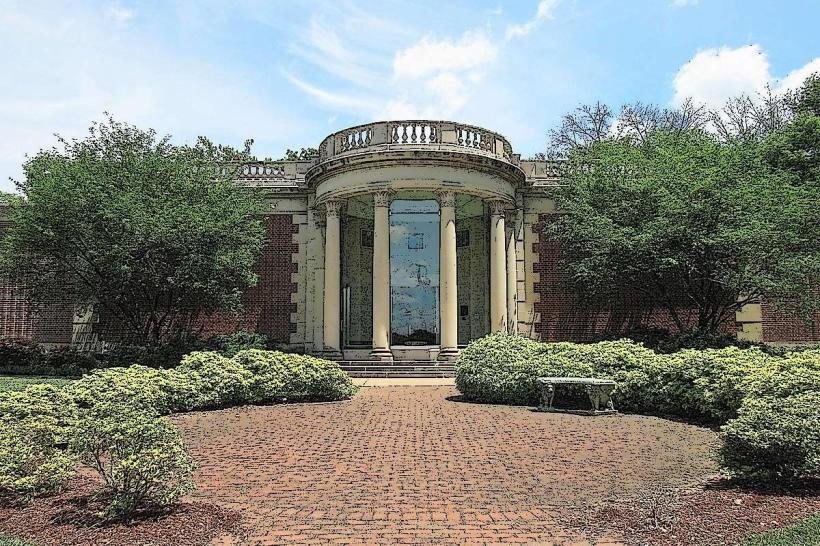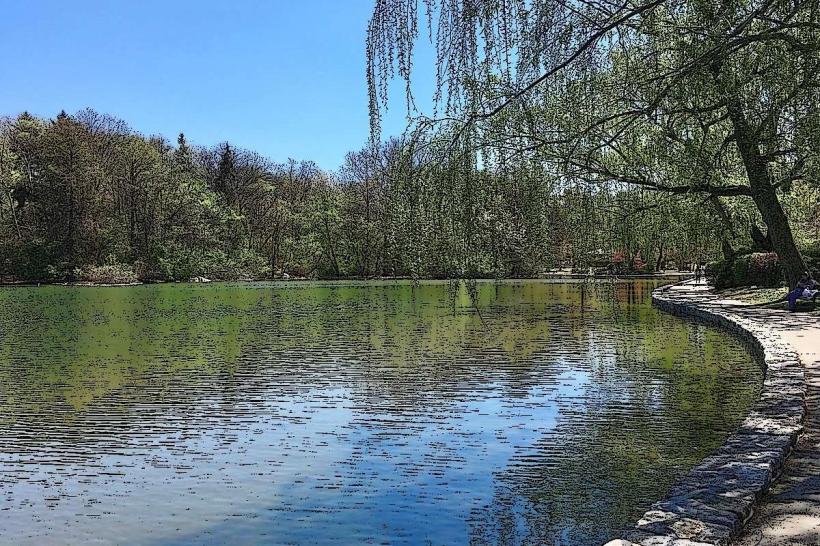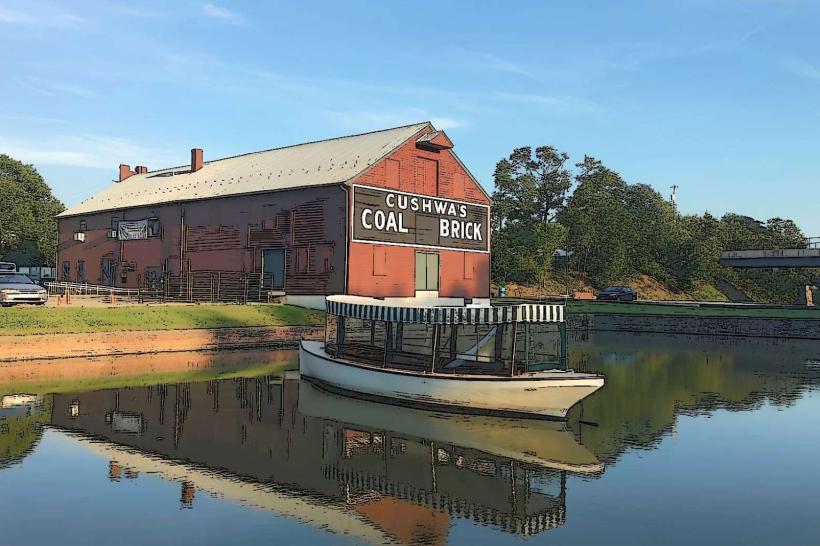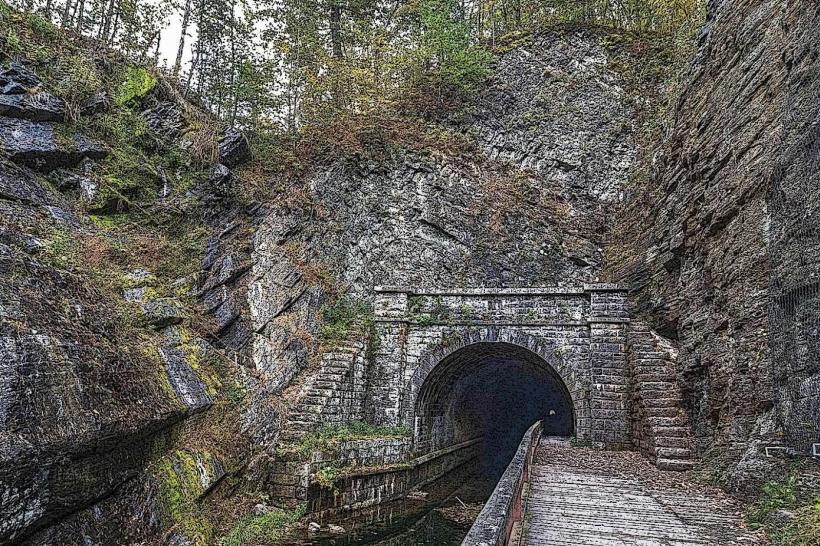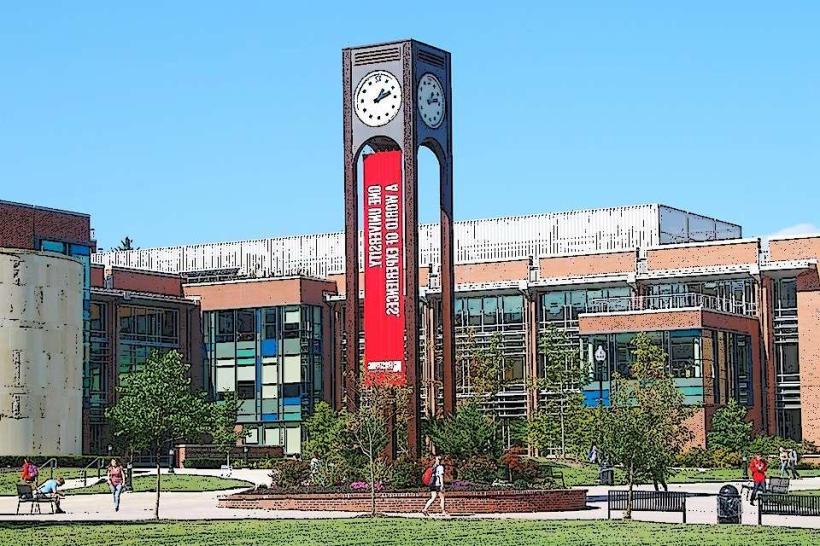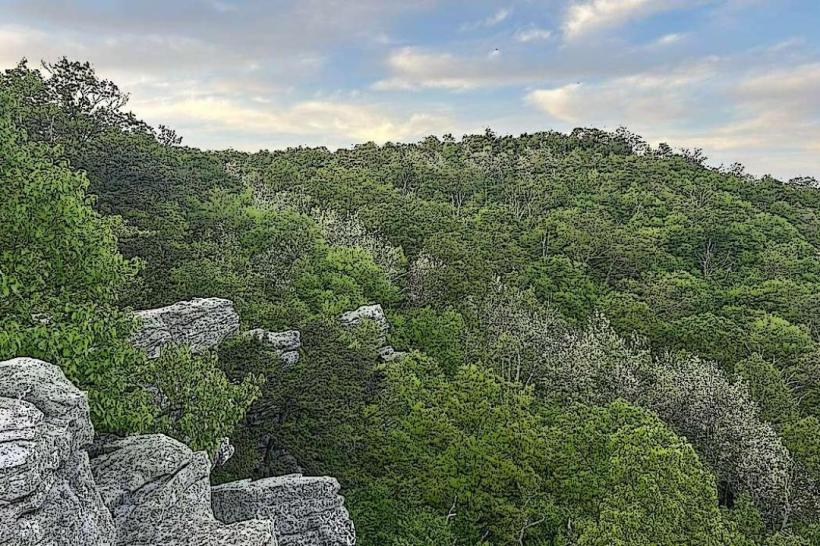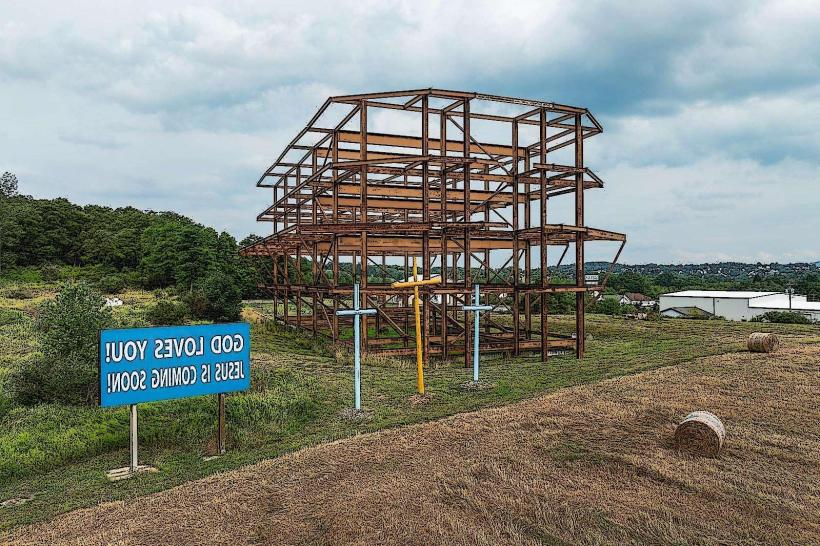Information
Country: USA MarylandContinent: North America
USA Maryland, North America
Overview
Maryland sits in the Mid-Atlantic, a state where Civil War landmarks meet quiet Chesapeake Bay shores, making it one of the nation’s most varied in history and landscape, what’s more people often call it “America in Miniature” because within its borders you’ll find nearly every kind of landscape-mountains, rolling farmland, deep forests, marshes, and sandy beaches.Maryland may be tiny, but it’s left a large mark on America’s history, politics, and economy-think of its harbors bustling with trade and debate, after that maryland’s geography falls into five distinct regions, and the Atlantic Coastal Plain stretches across its eastern and southern edges, where the land lies flat and low, the soil feels loose and sandy, and tidal rivers wind slowly toward the bay.It covers the Eastern Shore, part of the Delmarva Peninsula, and thrives on farming, hauling in blue crabs, and the wide, marshy wetlands, in turn in central Maryland, the Piedmont Plateau stretches across gently rolling hills, with busy towns and cities tucked among oak trees and winding roads.It’s the stretch where the coastal flats give way to the rising mountains in the west, a shift you can feel as the air grows cooler and the ground begins to slope, and the Blue Ridge Region is a narrow stretch in the state’s west-central area, where forested hills rise high and the air smells faintly of pine.It covers a stretch of the Catoctin Mountains, themselves a rugged slice of the vast Appalachian range, besides the Ridge and Valley Region sits west of the Blue Ridge, its landscape marked by long ridges running side by side with deep valleys, like folded ribbons of earth.The area’s famous for its limestone caves, rich valley soil, and the kind of natural beauty that catches your eye like sunlight on water, alternatively the Appalachian Plateau, or Allegheny Plateau, stretches into Maryland’s far western corner, where steep ridges rise above thick, shadowy forests-the state’s wildest and most rugged terrain.Maryland’s weather shifts with its landscape, from misty bays to brisk mountain air, thanks to its mix of geography, what’s more in the east, the state basks in a humid subtropical climate, with summers that feel heavy and sizzling, and winters that stay mild.Head west and the climate shifts to a more continental feel-winters turn sharper, and in the mountains, snow piles deep enough to crunch underfoot, besides across the state, spring brings mild, comfortable days, and autumn follows with crisp air and gentle sunshine.Maryland boasts one of the nation’s highest median household incomes, fueled by its closeness to Washington, D, equally important c, and a mix of industries from tech to seafood processing, a little Government jobs play a huge role here-thanks to the state’s closeness to Washington, D, equally important c, federal offices employ thousands, from clerks shuffling papers to analysts poring over reports.Maryland is home to top research centers and biotech companies, with many clustered near Baltimore’s busy harbor and the suburbs of Washington, besides maryland is home to leading universities and federal labs, places where recent ideas spark and careers take shape, from bustling lecture halls to high-tech research floors.Maritime and Shipping: The Port of Baltimore ranks among the nation’s busiest, moving stacks of cargo containers and welcoming cruise ships filled with travelers, consequently on the Eastern Shore, farming still thrives, and watermen haul in blue crabs and oysters from the briny Chesapeake Bay-both are vital to the region’s livelihood.Maryland packs a lot of people into a miniature space and brims with cultural variety-you can hear half a dozen languages just walking down a Baltimore street, while baltimore and the suburbs of Washington, D. C, are home to vibrant African American, Asian, and Hispanic communities, with some neighborhoods buzzing with the scent of fresh tortillas or the sound of lively street markets, in turn the state boasts impressive educational achievements, and its middle class is vibrant and well-rooted, like rows of tidy houses lining a quiet street.Maryland boasts a strong public school network and is home to major universities, including the University System of Maryland, whose flagship campus, College Park, buzzes with students crossing the tree-lined quad, to boot the state puts a strong focus on STEM education and works closely with federal science and technology agencies, from research labs to satellite programs.Maryland’s transportation network keeps a busy, crowded region moving, from rush-hour trains packed with commuters to trucks hauling goods along its highways, alternatively i-95, I-70, and I-270 slice across the state like long gray ribbons.I think, The central corridor boasts a strong public transit network, with light rail humming along the streets, MARC commuter trains running daily, and easy access to the Washington Metro, as a result baltimore-Washington International Thurgood Marshall Airport, or BWI, buzzes with travelers and flights, making it a key hub for air trek.Maryland’s culture pulls threads from both North and South, mixing them into a single tapestry-crab feasts by the Bay alongside porch swings in summer heat, equally important people recognize it for its bold seafood traditions-think steaming piles of crab-its vibrant go-go and smooth jazz scenes, and a fierce love of sports, especially football and lacrosse.Thanks to its diverse landscape, the state offers everything from casting a fishing line into the calm waters of the Chesapeake Bay to trekking rocky mountain trails or skiing down snowy slopes in the west, while in Maryland, politics run deep; it’s a state where neighbors pack town halls and civic engagement is part of the fabric.Statewide and national races usually tilt Democratic, most noticeably in the crowded, bustling central region, but some western hills and rural counties still cast more conservative votes, in turn from its offices in Annapolis, the state government pushes forward progressive policies in education, healthcare, and the environment, like adding solar panels to public school rooftops, almost From what I can see, Environmental Concerns Maryland has worked hard to protect the environment, focusing especially on keeping the Chesapeake Bay’s waters clear and healthy, while we’re working to cut pollution from farms and city storm drains, bring wetlands back to life, and shield endangered species-like the tiny, vivid-blue butterflies that cling to the last scraps of habitat.The state’s tackling climate change with current renewable energy projects and plans to strengthen its coastline, from solar farms in sun‑baked fields to seawalls built to hold back rising tides, in conjunction with nicknamed the historic Line State, Maryland packs a lot into its minute borders-Annapolis holds the capital, Baltimore towers as the largest city, about 6.2 million people call it home, and in the Eastern Time Zone you’ll spot the shining flash of a Baltimore oriole or the golden petals of a black-eyed Susan; its mix of geography, culture, and economic muscle mirrors the nation as a whole, moderately Maryland stretches from salty coastal villages to rugged mountain ridges, a area of striking contrasts and lasting significance in American life.
Author: Tourist Landmarks
Date: 2025-10-06

